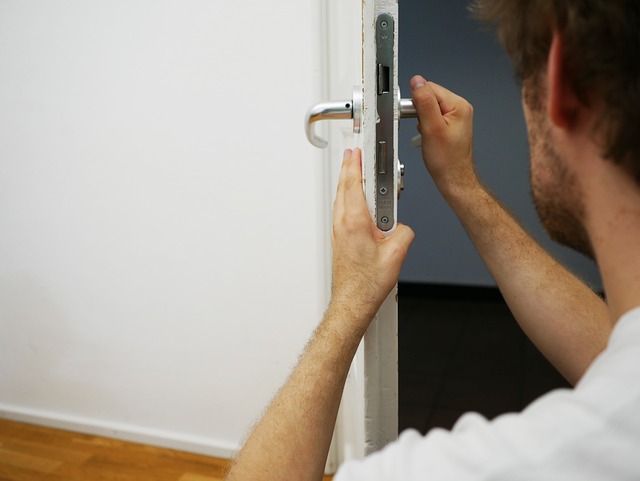Rural property security demands specialized solutions like wireless and solar-powered outdoor alarms, offering flexibility, eco-friendliness, and comprehensive protection. DIY installation kits cater to diverse needs, from basic wireless setups to advanced long-range perimeter alarms. These systems, with motion sensors and weatherproof designs, provide early alerts for threats in remote areas, enhancing security while empowering homeowners with customizable features. Regular maintenance ensures their reliability in all conditions.
In today’s digital era, ensuring the security of rural properties is more crucial than ever. DIY installation kits for outdoor alarm systems offer a cost-effective solution for folks seeking peace of mind in remote areas. This comprehensive guide delves into the world of wireless outdoor security alarms, solar-powered options, and motion-activated devices tailored for rural homes. From understanding unique security needs to installation, maintenance, and best practices, discover how to transform your rural property into a secure haven with long-range perimeter alarms that withstand all weather conditions.
- Understanding Rural Property Security Needs
- Types of DIY Outdoor Alarm Systems
- Components and Assembly: A Step-by-Step Guide
- Installation, Maintenance & Best Practices
Understanding Rural Property Security Needs

In rural areas, property security needs often differ significantly from those in urban or suburban settings. With larger land parcels and potentially isolated homes, rural landowners face unique challenges when it comes to protecting their properties. Outdoor alarms for rural properties play a crucial role in deterring intruders and providing peace of mind. Wireless outdoor security alarms, for instance, offer flexibility and ease of installation, making them ideal for remote locations where running power lines may be difficult or impractical.
Solar-powered outdoor alarms are gaining popularity due to their energy efficiency and environmental friendliness. Motion-activated alarms for rural areas are another effective solution, triggered by any movement within a certain radius, ensuring maximum protection. Moreover, weatherproof alarms for rural properties are essential to withstand harsh climate conditions, maintaining reliability year-round. Long-range outdoor alarm systems can cover extensive perimeters, while perimeter alarms for rural homes provide an added layer of security by alerting homeowners and authorities in case of potential threats.
Types of DIY Outdoor Alarm Systems

When it comes to securing rural properties, DIY installation kits for outdoor alarm systems offer a cost-effective and flexible solution. These systems cater to various security needs, from basic wireless setups to sophisticated long-range perimeter alarms. Solar-powered models are gaining popularity due to their eco-friendly nature and ability to function autonomously, making them ideal for remote areas with limited access to electricity. Motion-activated alarms are another common choice, as they can detect intruders in a wide range of rural settings.
For enhanced durability, weatherproof designs are essential, ensuring these alarms can withstand harsh outdoor conditions. Perimeter alarms specifically target the exterior zones surrounding homes or farms, providing an early warning system for potential threats. With customizable features and easy installation, DIY kits empower homeowners to take control of their security while enjoying peace of mind in rural environments.
Components and Assembly: A Step-by-Step Guide

When setting up a DIY installation kit for an outdoor rural alarm system, understanding the components and their assembly is key. These kits typically include various elements designed to secure your rural property effectively. The process begins with unpacking and inspecting each part—from sensors to control panels and solar panels (for solar-powered models).
Assembly involves strategically placing motion sensors around the perimeter of your land to detect any unusual activity. Next, install the control panel, often a central command center that monitors sensor inputs. For long-range coverage, consider adding additional transmitters or repeaters to extend the alarm’s reach. Ensure all connections are secure and weatherproof to safeguard against outdoor elements, making these systems perfect for rural areas where reliable power sources may be limited due to remoteness.
Installation, Maintenance & Best Practices

Installation, Maintenance & Best Practices
DIY installation kits for outdoor rural alarm systems offer a cost-effective and flexible solution for enhancing security on properties far from urban centers. These kits often include wireless components, making them easy to set up and expand according to individual needs. For optimal performance, focus on careful placement of sensors, ensuring good line-of-sight to potential entry points and covering all relevant areas of the property. Solar-powered models are a smart choice for remote locations without reliable grid electricity, while motion-activated alarms provide immediate alerts for any unusual activity in rural areas.
Regular maintenance is crucial for keeping your outdoor alarm system at peak performance. Inspect batteries regularly, ensuring they are fully charged and functional. Clean sensors of debris and ensure wires are secure to prevent false triggers. In harsh weather conditions, invest in weatherproof alarms designed to withstand extreme temperatures and moisture. Following these best practices will contribute to a robust, reliable security network for your rural property around the year.
DIY installation kits for outdoor rural alarm systems offer an effective and cost-efficient solution for enhancing property security. By understanding the unique needs of rural properties and exploring the various types of wireless outdoor security alarms available, including solar-powered models with long-range capabilities, homeowners can implement powerful motion-activated perimeter alarms that stand up to harsh weather conditions. Following a detailed step-by-step guide for assembly and implementing best practices for installation and maintenance, rural property owners can take control of their safety with ease. These systems are a game-changer for those seeking to protect their homes and land in remote areas.
